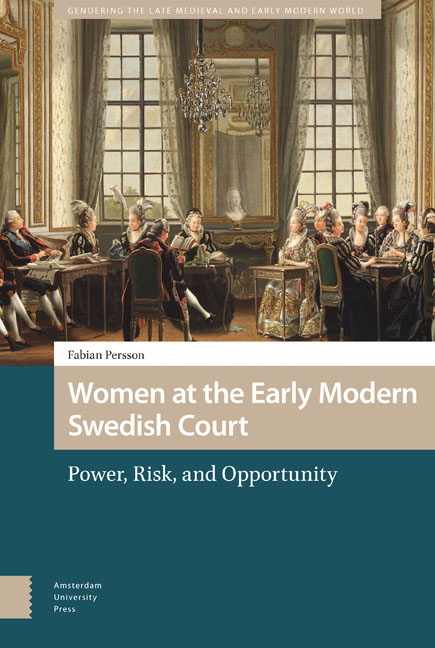4 - Noblewomen Crossing Borders
Published online by Cambridge University Press: 15 April 2021
Summary
Abstract
Of the women at and around the Swedish court, there were a sizeable number who were of foreign extraction. Whenever a foreign princess became queen she was accompanied by a retinue largely consisting of women from her homeland. European courts handled the presence of foreign noblewomen in different ways. From a relatively tolerant approach in the sixteenth century, there was a hardening of attitudes in the seventeenth century, and France, England, and Spain all tended to quickly expel foreign noblewomen who arrived with royal brides. Yet while the clean break model was practised at several important courts, it was not the whole story, for at many German courts, for example, a gradualist approach was the norm.
Keywords: aristocrats, foreigners, integration
In 1570, the King's Polish Carver (Bissare), Pzebastianus Pbimiski, was given items for the Polish women who were about to return ‘home to their country again’. On her marriage to Duke (later King) John, Princess Catharina Jagellonica had brought courtiers and servants with her from Poland. About 60 Poles and at least one Italian were listed in her entourage at the time of her marriage in 1562. Of these, two were older ladies, six were Maids of Honour, and one was the Chief Maid of Honour. A further four women were Chamberers and two were the dwarfs Doska and Baska.
When Catharina and her husband were imprisoned by her brother-in-law Eric XIV in 1563, she pleaded with the King to allow some of her incarcerated Polish entourage return to Poland. Not all, though, for when Catharina became Queen in 1568 she still had a number of Poles in her employ – most of her women in 1568 bore Polish names. By 1569 a number of Swedish women had been added, but there was still a strong Polish presence This included a number of men, such as Laurens Rylski and Nikolaj Opaski, who served the Queen as body servants. King John III had also several Polish courtiers and servants.
Soon, however, these Polish women were cleared out in what appears to have been a conscious action to de-Polonise her household. As Queen it was more important who served her than it had been when she was a Royal Duchess. The remaining Poles were primarily body servants such as the Queen's favourite, the dwarf Doska, her Valets, and a few courtiers, such as the Carver Pbimiski.
- Type
- Chapter
- Information
- Women at the Early Modern Swedish CourtPower, Risk, and Opportunity, pp. 103 - 120Publisher: Amsterdam University PressPrint publication year: 2021



